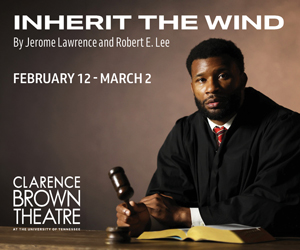If there was ever a concerto that could send its audience into ecstasy with the conclusion of the first movement, it is certainly the Tchaikovsky Violin Concerto. Its extended rousing coda works its familiar magic on even the most hardened listener, requiring conductors and soloists to plan on vigorous performance-stopping applause and how to deal with it. However, I’m not certain that anyone was quite prepared for what happened at the Thursday and Friday Knoxville Symphony Orchestra performances of the Tchaikovsky, as the audience leapt to its feet for an extended ovation, some apparently unwilling to believe that the concerto was not over.
While Tchaikovsky must bear a lot of the blame for this quasi-rapture, he was assisted on this occasion by violinist Robyn Bollinger who, frankly, stunned the audience with an inarguably brilliant performance. Bollinger, playing a 2017-constructed violin by Brooklyn-based luthier Samuel Zygmuntowicz, took listeners on a captivating jaunt through Tchaikovsky’s changing musical scenery. The young violinist kept her interpretation fresh—and the audience enthralled— through passagework that brimmed with clean details and a delightful rhythmic and melodic take, all the while displaying razor-sharp technique.

Bollinger, conductor Aram Demirjian, and the orchestra also kept the piece vibrant with a dramatic take on dynamics and tempo variations, while never giving in once to over-Romanticizing. While the second movement—a Canzonetta: Andante—is a perfect candidate for such sentimentalizing with the soloist contrasted against melancholy woodwinds, Bollinger kept the details and lyricism clean, and yet, beautifully wistful.
Bollinger and Demirjian took a bold and accelerating pace through the Finale that pulled the listener along with a breathless energy. Nevertheless, I did not detect any occasions of loss of sync between soloist and orchestra, although few would have cared given the momentum of the moment. All through this ear-boggling race to the end and its blazing flurry of notes, Bollinger maintained a clarity of detail that was remarkable. And, with the exploding climax, the audience was once again on their feet.
To reward the audience for their enthusiasm, Bollinger lovingly performed as an encore the Largo from J.S. Bach’s Violin Sonata No. 3.
After intermission, the KSO’s Masterworks concert took a decided turn away from Romanticism and toward the gravity of Soviet era modernity, certainly a programming contrast not without its risks. Confident in his course, Demirjian chose the Symphony No. 5 of Dmitri Shostakovich and led the orchestra in a performance that was one of the most compelling and accomplished of the year so far.
The Shostakovich 5th, from 1937, was a work that was something of a major moment for the composer—his effort to restore his image among Stalin-ites, while carefully disguising his true feelings of bitterness for his treatment at the hands of the Stalin propaganda machine. Demirjian and the orchestra displayed a supporting focus that was a mix of emotional insistence and unsentimental brashness.
That emotional insistence played out in the opening movement, a tapestry of interwoven lines painted with a contrasting tonality of lower tones against higher, yielding a quasi-harshness that spoke volumes of the composer’s intention. The second movement turns a bit toward the satirically amusing, with cello and woodwind passages that have an edge. Concertmaster William Shaub gave the movement’s violin solo passages a poignant point of view.
“Agonizing grief” may be an apt description of the Largo movement, one that Demirjian and the orchestra carried out, mining the sense of desperation that is slathered on, punctuated by the hollowness of the beautifully played clarinet passages. The grief, though, is assuaged at the very end with hopefulness—a lovely, pianissimo picardy third chord that slowly evaporates.
In the Finale movement—one that posterity hopes was the composer’s tongue-in-cheek compromise to Stalin—Demirjian took the orchestra into bold sonic territory, letting the low brass press their case while using an accelerating tempo to drive the emotional response. This was a forceful conclusion to an excellent performance.
On any other concert, sans Tchaikovsky and Shostakovich, the opening work, Beethoven’s Egmont Overture, would have garnered much greater admiration and mention for both the piece and the KSO’s perfectly fine performance. Of course, as the Beethoven 250th anniversary approaches, I have the sneaking feeling we’ll be hearing much more Beethoven as we progress into that anniversary in 2020.






